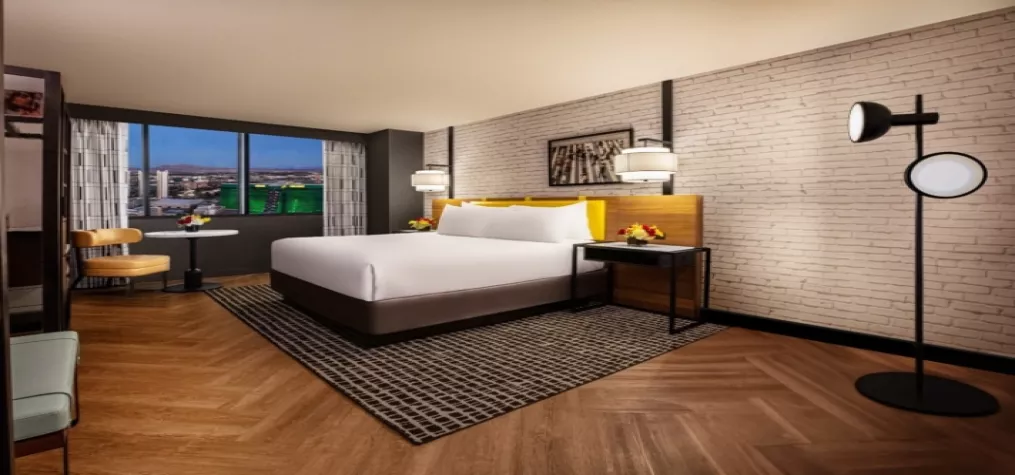Paul Whitney

Paul Whitney is executive producer at bluemedia and is known worldwide for his years of experience in 3D projection, immersive 360° domes, building illumination and more.
The best events transcend engaging the audience – they make the subject matter and entire experience come alive. An increasingly popular method is projection mapping, a technique that upends all our memories of flat-screen home movie projections and creates 3D experiences like those at the Courtyard by Marriott Super Bowl Sleepover in New York City.
From theme parks to Super Bowls to brand activations, event organizers are increasingly incorporating the tech. Also known as spatial augmented reality or video mapping, the technique maps projected images onto nearly any surface, such as a building exterior, interior wall, object or landscape, and transforming it into a video screen.
The result is a dynamic projection that immerses an audience into that creative environment, enabling event organizers to go where traditional creative has never gone, making images come alive in 3D where they never could before.
Long embraced in Europe and growing in popularity elsewhere, projection mapping can provide truly memorable event experiences and the kind of audience engagement that can become contagious. Millennials, in particular, would rather spend their money on cool experiences than accumulate objects and are driven by their peers' posts about live experiences to get out and attend events themselves. And thanks to social media and smartphones, projections live beyond their initial showings. Audiences feel compelled to share the view with friends, spreading the post-production impression of the event.
Wondering whether the technology is right for you? Here are three questions to consider:
1. How much budget are you working with?
Adding projection mapping to an event creates a “wow” factor many audiences in the U.S. rarely expect to see, partly because it was historically the province of European public arts projects. But increasingly affordable technology has made projection mapping a more accessible option to bridge the gap between audience and presenter.
Prices for projection mapping can differ significantly from one location and vendor to another, though you can reasonably expect quotes to range from $150,000–$450,000 and up. But don’t assume the price will match what another event paid or what another provider quoted – always seek your own information, as each program is custom-designed for each venue or event.
While some coordinators assume renting the projector is the biggest part of the bill, other expenses behind creating a projection map, such as creating the video itself, location and permit costs, show length and crew costs can add up quickly. Ask a professional to evaluate your venue and determine what will fit within your budget.
Also, consider your time budget for setting up a projection. From approvals to storyboard to the animation design, coordinators need at least eight weeks – preferably twelve – to build a show.
2. Can your venue accommodate a projection?
Projections operate on a huge scale, so work with your production partner to check the local laws before planning your event, and reserve a location that will fit the needs of the projection team and accommodate the audience size you desire.
From the beginning, evaluate venues for their ability to facilitate a show. Factor in the size of the building or screen on which you want to project, the venue's size relative to your expected number of guests and any related outstanding costs.
The surface type available at the event is also important. An all-glass building will be unusable unless the event producer adds vinyl to project upon. At one show our company produced, we had to cover 30,000 square feet of window space to present a projection – but that might not be possible everywhere.
Finally, plan a projection event when daylight won’t interfere. Ambient light is the enemy of projection mapping technology, as it makes the projection itself difficult to see. Schedule your projection shows, which will likely repeat five to eight times throughout the event, after dusk to ensure viewers experience the shows’ full impact.
3. Can you keep attendees and technology secure?
Work with your vendor or partner to research the location of your activation to discover how audiences will flow through the event and how your projection will impact the surrounding area. If your event can be seen across nearby streets, for example, the local government might require you to shut down those streets to prevent distracting drivers or pedestrians.
In addition to making sure attendees are safe, talk with your partner about taking precautions to ensure the projection equipment remains secure before, during and after your show. If event setup will last more than a day, investing in 24-hour security for the duration will help guarantee your vendor's tech will be ready and working on the day of the activation.
Projection mapping can be an incredible addition to many events, immersing attendees in a one-of-a-kind, unforgettable experience. By asking yourself these simple questions, you can ensure your activation is as effective and engaging as possible.
